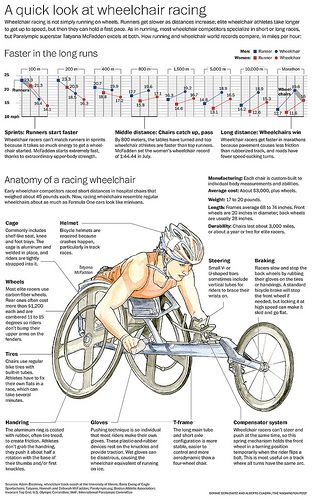In this guide, we’ll take a high-level look at what bicycle tires a made of and how everything comes together.
While it might seem like a simple rubber hoop, bringing a bike tire into the real world involves high-tech machinery, the latest manufacturing techniques, and labor-intensive craftsmanship.
Here, we’ll walk you through the process step-by-step.
What bicycle tires are made of largely depends on which purposes they’ll be used for.
As such, after modeling its design using 3D software, the manufacturer will create a rubber formula that displays different characteristics. These include:
It’s a balancing act, though. Why? Because improving one trait typically reduces another’s performance. To illustrate this, increasing rubber hardness boosts a tire’s longevity and reduces rolling resistance, but also decreases its wet weather adhesion, while also delivering a harsher ride.
Although the specific designs and rubber mixes used by manufacturers are closely guarded secrets, Bicycling.com explains the mix of ingredients is generally the same:
When it comes to what bicycle tires are made of, there are four main types of rubber used.
The tread and sidewalls are typically constructed from natural rubber, which is derived from the bark of the Hevea Brasiliensis tree. Synthetic rubber versions, such as butyl rubber and halogenated butyl rubber, are usually extracted from crude oil and used in the tire’s casing.
Carbon black helps to reinforce and strengthen modern bike tires, as well as improve their abrasion resistance, maximize traction, and provide their dark color.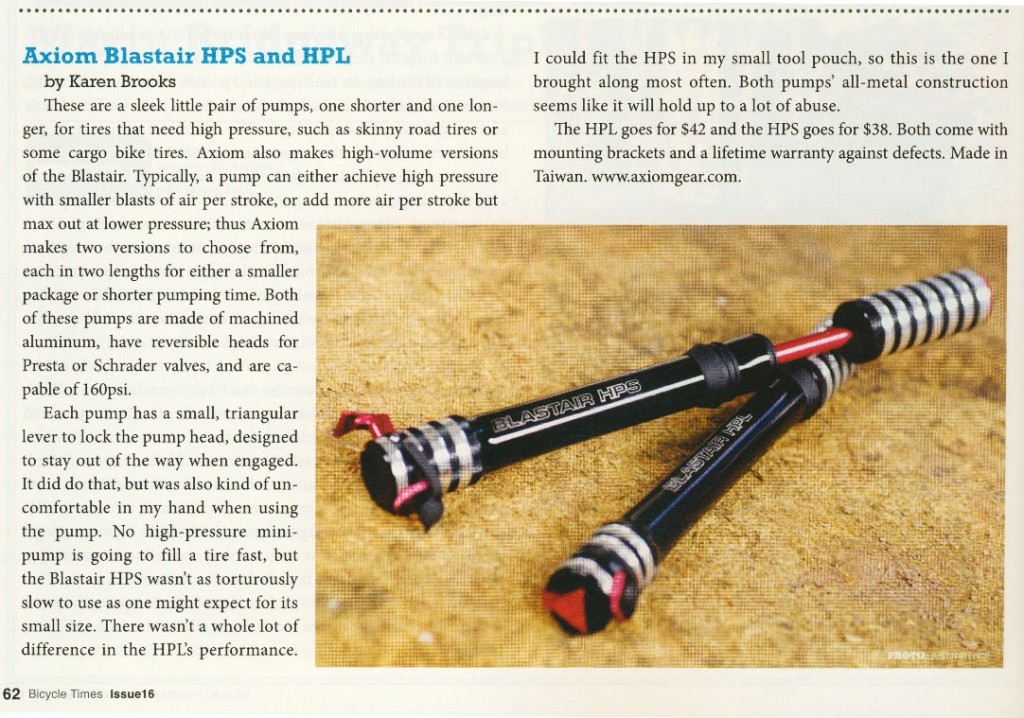 In years past, sulfur provided many of these same benefits.
In years past, sulfur provided many of these same benefits.
Silica (silicon dioxide), on the other hand, determines traits like flexibility and wet weather performance.
Bicycle tires aren’t made from just one type of carbon black or silica, though. Different versions are used depending on the section of the tire being constructed, along with the manufacturer’s specific performance requirements.
Sulfur also acts as a softener during the process, along with other industrially refined ingredients like:
As a tire is used, these waxes and the beneficial components they contain naturally migrate to its surface, thereby providing protection from exposure to ozone (antiozonants), oxidation (antioxidants), and heat.
To give you an idea of commonly used ingredient ratios, Schwalbe tells us their tires typically contain 40% to 60% rubber and 15% to 30% filler, with 20% to 35% remaining ingredients.
These ingredients meet inside industrial machinery known as an internal mixer. (The Maxxis website references a specific model, known as a Banbury mixer.)
Here, bales of rubber are kneaded inside a large chamber by two rotors, which move at variable rotations per minute. They’re simultaneously heated to temperatures as high as 338°F (170°C), while other ingredients are added as needed to achieve desired traits like elasticity, durability, surface adhesion, dampening, and so forth.
Depending on the size of the mixer, manufacturers can combine between 40 kg and 400+ kg of rubber and other ingredients per session, and in less than five minutes. They draw multiple samples during this relatively short process to ensure the desired properties are present.
Once mixing is complete, doughy rubber exits the machine through a discharge hatch at the bottom and is sheeted out like a pastry into a thick, continuous layer by powerful rollers.
At this point, Maxxis tells us it’s referred to as a ‘slap.’
During the first phase of the manufacturing process, an internal mixer is commonly used to blend natural and synthetic rubber bales with other ingredients. This creates compounds that exhibit specific characteristics, depending on the tire’s intended use. Credit: Alibaba.comSlap slated for sidewalls is covered with plastic sheeting and rolled further. Tread slap (the part that comes into direct contact with the ground) is cut into long, narrow strips.
These strips are then fed into an extruder and heated again. Once the rubber becomes doughy, a revolving screw applies shear force and sends it through a die, forming a profile that’s thicker in the center and thinner on the sides. Together, this helps improve resistance to wear.
Together, this helps improve resistance to wear.
To cool and set its shape, tread rubber is subsequently submerged in water. It’s also dipped in an anti-tack compound like metallic stearate or stearic acid, powdered mica, talc, or different water-based formulas, to prevent sticking. Then, it’s wound onto spools with a fabric separator between each layer to further prevent unwanted adhesion.
Sidewall slap is also wound around a spool, separated by fabric and then dried, stacked in cases called ‘books,’ and stored for later use. If needed, it’s immediately transferred to the next step in the process.
An example of butyl rubber being forced through a die, which it forms into a specific shape. When it comes to bike tire tread, this involves a curved design that’s thicker in the center and thinner on the sides. Credit: Goodyear RubberAs we explain in How Bike Tires Work, the carcass (otherwise known as the casing) is perhaps the most critical section of a bike tire, since it acts as the underlying framework and determines its shape. It also defines how the tire conforms to surface irregularities, along with its rolling resistance.
It also defines how the tire conforms to surface irregularities, along with its rolling resistance.
Due to its importance, we’ll split this part of the process into two different stages.
First, a third-party manufacturer twists nylon textile yarn together, treats it with chemicals that promote bonding with rubber, and forms it into a grid pattern.
Nylon mesh that features a grid-like pattern is calendered and molecularly bonded with tread rubber at a 45-degree angle. This provides a bike tire with strength and flexibility. © TreadBikelyUpon arriving at the tire manufacturer, this yarn is stored, and its temperature and humidity levels are carefully monitored since both of these factors can impact its tensile levels.
When the time comes, webbing is passed through very hot rollers at a 45-degree angle. This permanently bonds it with the tire’s casing rubber through a process known as calendering. This is what’s ultimately responsible for defining the tire’s shape and providing it with a great deal of support.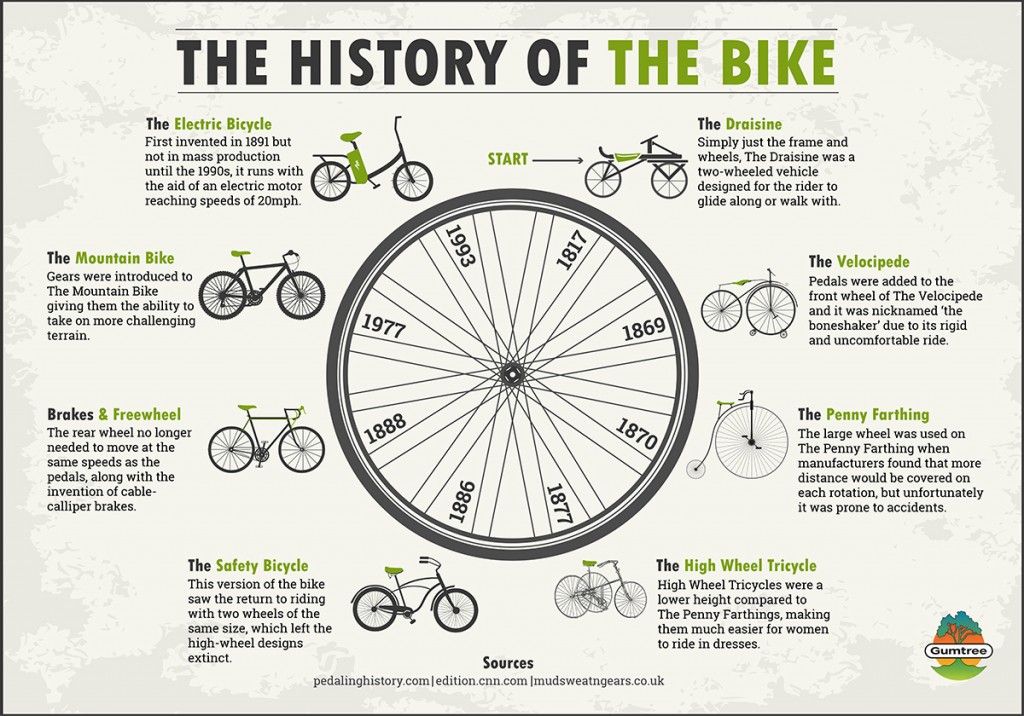
The density of this webbing yarn is measured in threads per inch (TPI), which references the number of threads contained in one square inch of the casing. Why does it matter?
Casing mesh with fewer TPI (< 80) typically features larger gauge threads and more rubber, resulting in tires that are heavier and more rigid. Higher TPI casing mesh (> 100), on the other hand, features finer threads and less rubber, resulting in greater strength, lighter weight, better flexibility, and improved suppleness. It also results in a higher price.
In addition to rubber compound and mixing process, Continental further explains that the yarn’s makeup can have an impact on a tire’s performance: “Very fine [casing] material makes the tire smoother and protects the carcass from punctures,” while “coarse fabric is more cut-resistant and makes the tire more robust,” they say.
Bottom line: Much like rubber formulation, “the choice of fabric,” they point out, “depends on the purpose of the tire.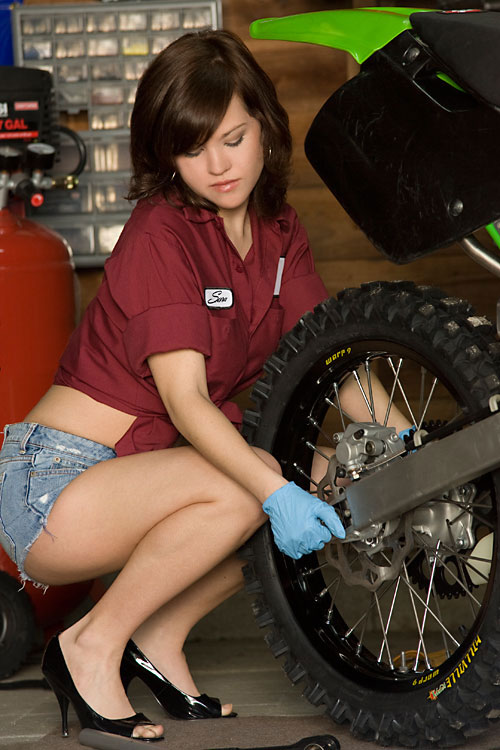 ”
”
After calendering, casing rubber enters a cutting station where blades slice it into premeasured strips. In most instances, it will take multiple pieces to construct a single tire.
Similar to the tread section, after being assembled by hand, these casing strips are wound onto spools with fabric backing that prevent sticking. They can be used immediately or stored for later assembly.
If used immediately, raw tread rubber is added to the carcass by wrapping a layer around the drum and firmly sticking it down. Continental points out that tread thickness is also a significant contributor to a tire’s ride quality characteristics.
While everything above is happening, a specialized wrapping machine takes steel or aramid (Kevlar) fibers, twists them together, and forms them into rings. These rings, formally known as the tire’s beads, are then covered with a thin layer of protective rubber.
These rings, formally known as the tire’s beads, are then covered with a thin layer of protective rubber.
With the casing already wound around a metal spool, Schwalbe tells us that a specially trained employee inserts beads on each side by hand. Once inflated, the strength they provide will help hold the tire onto the rim after it’s inflated with air.
Related: How to Buy a Bike Pump
Next, a mechanical apparatus simultaneously folds the casing’s rubber over both beads. If additional puncture protection is needed, a Kevlar strip is forced into the rubber as well.
Here, we can see the casing rubber installed on the tire building drum, with each bead’s wire in place. Next, arms on the sides will fold the rubber over each bead to form a single unit. Tip: Look closely, and you’ll see the casing’s nylon mesh calendered at a 45-degree angle into the rubber. Credit: Kenda TireThe extruded rubber for the tire’s sidewalls is now glued into place, and the tread is applied to the center. With all of the layers set, the bike tire is removed from the building machine. At this point, it’s known as a ‘green’ tire.
With all of the layers set, the bike tire is removed from the building machine. At this point, it’s known as a ‘green’ tire.
From here, a specialist loads the tire into a branding station, where hot metal plates quickly bond labels to its sidewalls.
It’s then placed inside a clamshell-like mold over a tubular bladder. The shell is sealed, steam is pumped into the bladder like a balloon, and the interior heats up to 180°C for between three and six minutes. Overall, this accomplishes two goals:
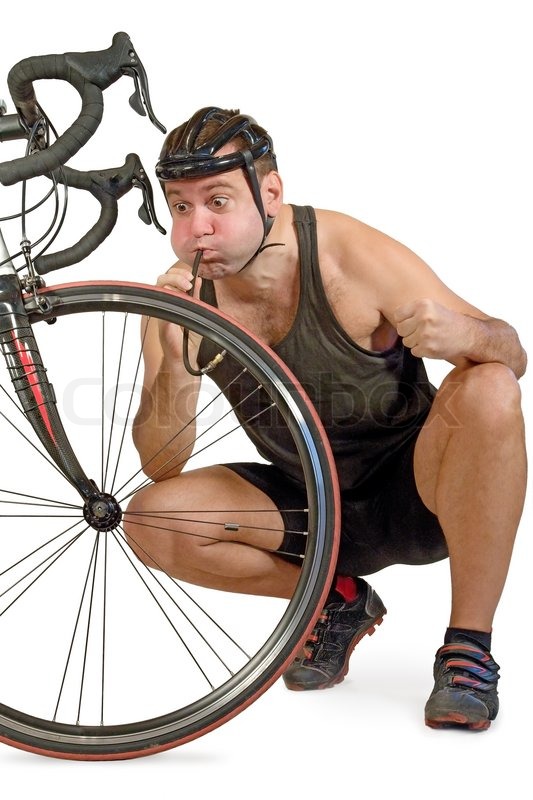 This can improve traction, but also increase rolling resistance. Credit: Alibaba
This can improve traction, but also increase rolling resistance. Credit: AlibabaSimilar to many other components involved during the manufacturing process, such as rubber formulation and threads-per-inch, time spent ‘cooking’ depends on a tire’s desired traits. For example, the general rule of thumb is that the longer it spends vulcanizing, the harder—and less elastic—a tire will be.
An example of a manufacturer’s clamshell-like chamber, which houses the tread mold referenced above. After placing the green tire inside and heating it to high temperatures, a chemical process called vulcanization improves the rubber’s elasticity, strength, viscosity, and wear and weather resistance. Credit: Global Mountain Bike NetworkFinally, the tire is removed from the mold to cool. Eventually, it’s sent to a warehouse for distribution.
After cooling, each tire is inspected for flaws (e.g., bubbles, voids, etc.), whether by a specially trained employee or by bombarding it with x-rays and visualizing the results on a screen.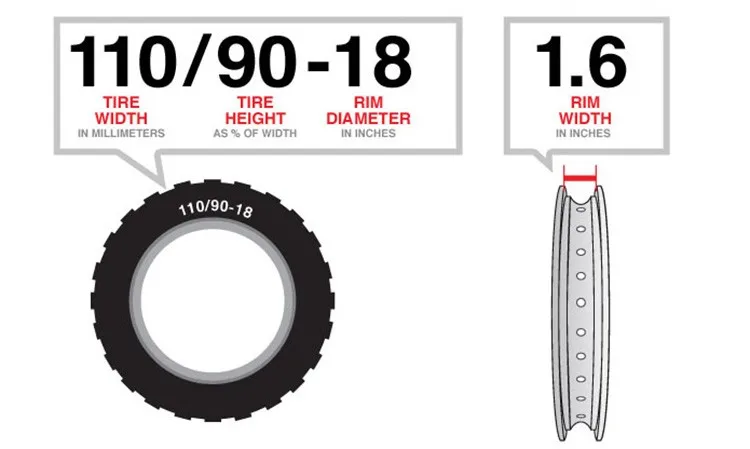
In most instances, one tire from each batch also undergoes in-depth quality control testing. This might involve one or more of the following:
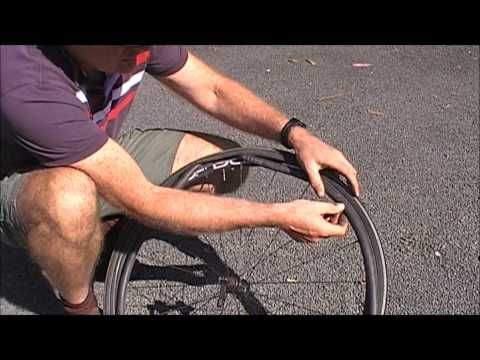 Credit: Triwood1973
Credit: Triwood1973It’s easy to overlook the substantial technology and manufacturing prowess involved in the development and production of every tire that graces your bicycle.
The next time you go for a spin, though, take a brief moment to marvel the many decades of progress associated with its rubber compound, additional ingredients, mixing process, mesh formation and calendering, and quality testing—all of which combine to make sure you have the smoothest, most enjoyable ride possible.
Keep rolling: Common Bike Tire-Related Words & Phrases
guidesmanufacturingreferenceRubber compoundtire guidestires
A bicycle tire consists of three basic elements: the carcass, the bead core and the rubber tread. Furthermore, almost all Schwalbe tires have a puncture protection belt.
The bead core of the tire determines its diameter and ensures a secure seat on the rim. Generally the bead core of a tire consists of a wire bundle. In folding tires, the wire is replaced with a hoop of aramid fibers.
The carcass is the “framework” of the tire. The textile material is rubber coated on both sides and cut at a 45 degree angle. With this angle placed in the rolling direction, the carcass provides the tire’s necessary stability. All Schwalbe carcasses are made of polyamide (nylon). Depending on the quality requirements of the tire, the carcass materials are woven in various densities.
The rubber compound of a tire consists of several components:
■ Natural and synthetic rubber
■ Fillers, e.g. carbon black, chalk, silica
■ Softeners, e.g. oils and lubricants
■ Anti-aging agents (aromatic amines)
■ Vulcanizing aids, e.g. sulphur
■ Vulcanization accelerators; e.g. zinc oxide
■ Pigments and dyes
Depending on the compound, the rubber content is around 40-60%.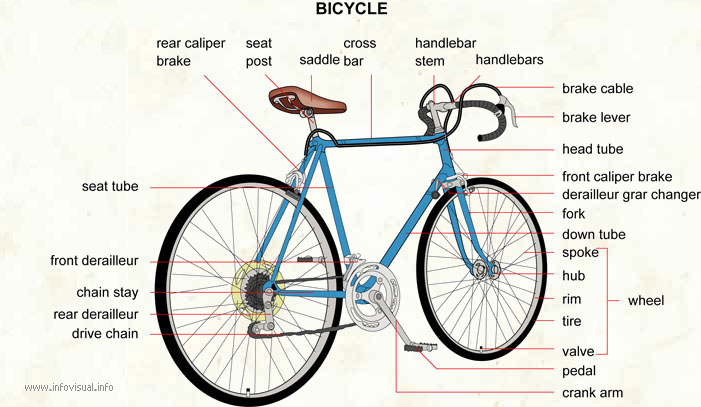 The filler amounts to 15-30% and the remaining components approx. 20-35%.
The filler amounts to 15-30% and the remaining components approx. 20-35%.
Almost all Schwalbe tires have a puncture protection belt, with the exception of special lightweight and sports tires, where this feature is purposely excluded. Even our standard tires are equipped with an effective puncture protection belt made of natural rubber and reinforced with Kevlar® fibers (K-Guard). In the case of the Marathon tires the 3 mm thick GreenGuard ensures the renowned high puncture protection. Furthermore, our top of the range tires have highly efficient puncture protection systems, which are specifically adapted to particular requirements, for example RaceGuard, V-Guard or SmartGuard.
How is a bicycle tire manufactured?The tire is manufactured from the prepared materials in a unique process. This is highly labor intensive and of course facilitated by using the latest modern machinery.
The carcass is applied to the building drum, cut and then spliced..jpg) As a next step, the wire or aramid bundles are inserted and the carcass is folded from both sides. The 45 degree-angle carcass material is now layered and forms a tire with a diagonal structure.
As a next step, the wire or aramid bundles are inserted and the carcass is folded from both sides. The 45 degree-angle carcass material is now layered and forms a tire with a diagonal structure.
In this phase, the respective puncture protection layer is inserted. Finally, the tread is applied exactly in the center of the tire.
But the green tire is still in a pliable form without a tread. Only during the vulcanization process in the mold, does the tire get its tread and its elastic properties.
The green tire is pressed into a tire mold by a special heating tube and – like in a waffle iron - vulcanized at approx. 170 degrees for five to six minutes.
Only after vulcanization can it be called rubber. Now the tire has its elastic properties and its tread.
After the production process every tire undergoes a strict quality control. Every tire is meticulously inspected once again. Continuous checking of random samples ensures correct weight and run-out.
Where are Schwalbe tires manufactured?
All Schwalbe tires are manufactured in Indonesia. Our state-of-the-art Schwalbe plant has more than 3000 employees who produce far more than one million bicycle tires per month.
The plant has existed for more than 20 years now. It is a joint venture between the German company Ralf Bohle GmbH and the Korean family company Hung-A.
All Schwalbe tires and all Schwalbe tubes are manufactured in the Schwalbe-owned plant. This exclusivity applies unreservedly. Schwalbe does not buy from other production facilities and no tires are produced for other brands.
What is the reason for Schwalbe manufacturing their tires in Indonesia?This is due to the history of the company. Schwalbe tires have never been manufactured in Germany. In former days, the Bohle company was a very small trading house dealing with all kinds of bicycle components. The Schwalbe story starts in 1973, when Ralf Bohle imported bicycle tires from Korea to Germany for the first time. This was such an interesting business for him that he concentrated on that from this moment on. Back then as well as today the business is operated in close partnership with the Korean partner company Hung-A.
The Schwalbe story starts in 1973, when Ralf Bohle imported bicycle tires from Korea to Germany for the first time. This was such an interesting business for him that he concentrated on that from this moment on. Back then as well as today the business is operated in close partnership with the Korean partner company Hung-A.
Of course, the location also has to do with labor costs. The production of bicycle tires is mainly manual work. For this reason the production was shifted from Korea to Indonesia in the 90’s.
There are resources of natural rubber, the most important raw material for the production of tires, in Southeast Asia which would have to be imported for the production of tires in Europe.
For a country like Indonesia production facilities like the Schwalbe plant provide considerable opportunities for development. By building up own industries and processing regionally available raw materials, Indonesia was able to increase the overall standard of living significantly over the last years.
Of course, the working conditions in Indonesia are not comparable to those, for example, in highly industrialized Germany. We believe, however, that our employees have a good job.
They work in three shifts. One shift lasts eight hours; in Indonesia the working week is usually six days. The wage level is far above the national average.
We are highly dedicated in retaining our employees in Indonesia by maintaining a good working environment. One example for that are the experience and the personal skills of the workers at the finishing machines, which have a major impact on
the quality of the finished tires. And the reliable, consistently state-of-the-art quality is one of the essential properties of tires from Schwalbe.
The density of the carcass fabric is expressed in EPI or TPI (Ends Per Inch, Threads Per Inch). The range of carcasses used, for example, for bicycle tires are 20, 24, 37, 50, 67 and 127 EPI.
The range of carcasses used, for example, for bicycle tires are 20, 24, 37, 50, 67 and 127 EPI.
In principle, the more close-meshed a carcass is woven, the higher the quality of the tire. A dense carcass is important for low rolling resistance and good riding properties. At the same time, puncture protection increases, because carcasses with a high strand density are difficult to puncture.
However, this does not apply to the extremely fine 127 EPI carcasses, as each strand is sheer and quite vulnerable. The best compromise for low weight and resistance is around 67 EPI.
In most of our top tires we use a 67 EPI carcass. Weight and rolling resistance can be reduced even further by using a 127 EPI carcass. But at the same time, these tires are more vulnerable to damage. Therefore, we intentionally use the 127 EPI carcasses only for light competition tires, where weight is an important factor.
Most bicycle tires worldwide are certainly manufactured with coarse 20 or 24 EPI materials. This material has no longer been used at all by Schwalbe for a couple of years now. Even very low-priced Schwalbe tires already have a state-of-the-art 50 EPI carcass.
This material has no longer been used at all by Schwalbe for a couple of years now. Even very low-priced Schwalbe tires already have a state-of-the-art 50 EPI carcass.
But be cautious when comparing EPI indications, as often the number of strands of all carcass layers are added together. An indication of 200 TPI results e.g. from 3 layers of 67 EPI each underneath the tread. With all EPI numbers above 150, it should be assumed that the figures have been calculated by adding up the strands in all layers. Schwalbe only indicates the material density in one carcass layer. Commonly, there are 3 carcass layers underneath the tread.
Does a perfect rubber compound exist?A rubber compound should have various properties that are to some extent contradictory: Low rolling resistance, good adhesion, low abrasion, long durability, solid lugs (MTB), etc.
The conflicting targets of low rolling resistance and good wet adhesion always attract particular attention.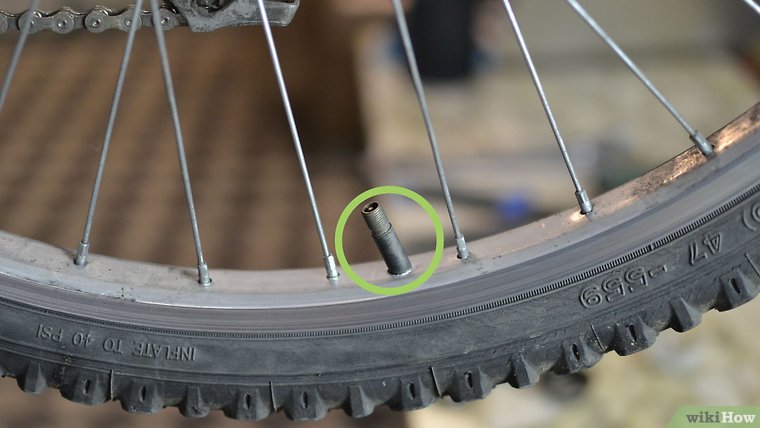 Good adhesion implies that the tire must “absorb” a lot of energy while low rolling resistance requires a rubber compound with low energy “consumption”. A good compromise is achieved with SILICA filler for example.
Good adhesion implies that the tire must “absorb” a lot of energy while low rolling resistance requires a rubber compound with low energy “consumption”. A good compromise is achieved with SILICA filler for example.
We prepare universal compounds which comprise all relevant properties as far as possible, as well as special compounds with extreme characteristics. The universal compounds are used, for example, for the ENDURANCE rubber compound in the case of the Marathon tire or the SPEEDGRIP compound in the case of the sport tires. A very effective possibility to optimize all relevant properties in one tire is the Triple Compound Technology. Special rubber compounds are used in various areas of the tread – substructure, bead seat, center – which exploit their respective strengths.
MTB tire with Triple Compound
Why are reflective lines used?Reflective lines are clearly visible when illuminated by a car headlight.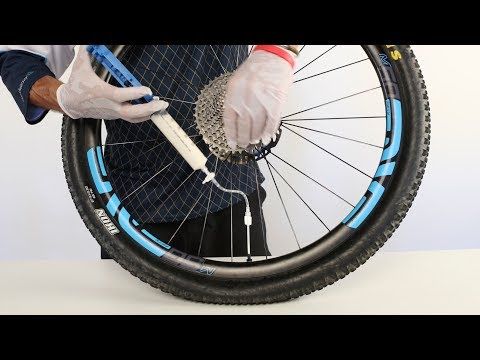 The material is retroreflective, i.e. it reflects in the direction of the radiation source. The two tiresized circles of light make a cyclist easily seen and recognized.
The material is retroreflective, i.e. it reflects in the direction of the radiation source. The two tiresized circles of light make a cyclist easily seen and recognized.
German Motor Vehicle Safety Standards (StVZO section 67 (7) allow this as an adequate replacement for wheel reflectors. In the Netherlands the reflective lines are even compulsory. Other reflectors are only permitted when they form a similar
circle of light like the reflecting rings on the tire.
The European mark of conformity certifies conformity with all legal requirements for lighting equipment (ECE – Regulations 88). That means for the reflective lines, light refection is sufficiently strong and bright, even at an unfavorable angle.
Because of this considerable safety advantage, we began to use reflective lines years ago as standard for all high-quality touring and city tires.
ECE 88R mark of conformity
Rubber and compound are the most popular materials today.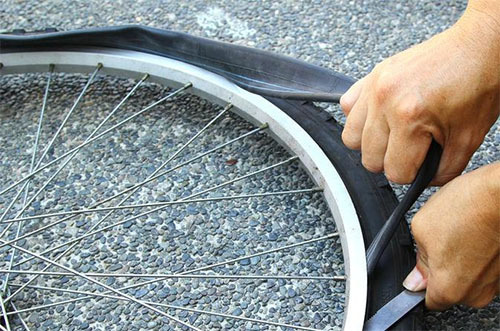 Rubber is extracted by thickening the sap of rubber trees. Such a process requires a large investment, therefore, synthetic rubber is more often used, which, in general, has little difference from natural rubber. In addition, oil and petrol resistant rubber can only be obtained from synthetic rubber. Rubber is made by adding a filler (usually carbon black) to rubber and then vulcanizing it. A large amount of filler significantly worsens the properties of rubber - it is subject to rapid wear. And the cost of such rubber is reduced very significantly. nine0005
Rubber is extracted by thickening the sap of rubber trees. Such a process requires a large investment, therefore, synthetic rubber is more often used, which, in general, has little difference from natural rubber. In addition, oil and petrol resistant rubber can only be obtained from synthetic rubber. Rubber is made by adding a filler (usually carbon black) to rubber and then vulcanizing it. A large amount of filler significantly worsens the properties of rubber - it is subject to rapid wear. And the cost of such rubber is reduced very significantly. nine0005
First, run a dry finger across the rubber while pressing it hard. If a clear mark remains, then this rubber will serve you little and of poor quality.
Large selection of bicycles. We will deliver Merida bicycles to your region. Best price guarantee.
Secondly, pay attention to the quality of the "whiskers" that are on each protector. To do this, try to pull them. A good and high-quality one will not want to come off, stretching three to four times its length.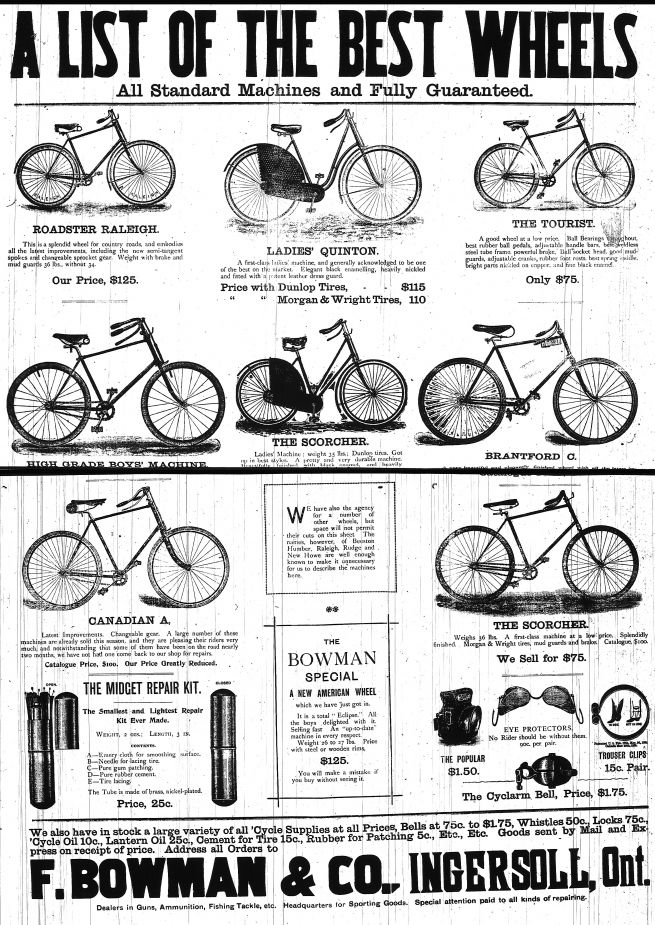 Like Nokian M&G, for example. On non-wearable rubber, they usually come off easily without stretching even twice as much. By the way: try to tear off at least 2-3 tendrils from different sides of the tire, as the quality of rubber can be uneven. nine0005
Like Nokian M&G, for example. On non-wearable rubber, they usually come off easily without stretching even twice as much. By the way: try to tear off at least 2-3 tendrils from different sides of the tire, as the quality of rubber can be uneven. nine0005
Thirdly, look at the quality of the tire as a whole: are there any extraneous surpluses or influxes of rubber, caverns, pay your attention to the quality of the sealing of the bead cord, the curvature of the tire. Personally, I never take crooked tires in the store, but I choose goods with bent bead cords, without “accordion” on the walls. And it turns out strange when the sellers begin to convince me that this is the norm, and that all defects will be straightened out as soon as I pump up the tire. I couldn't straighten them. nine0005
Available mountain bikes with delivery to your region! Big choice. Best price guarantee.
Compounds are compositions of polymers and monomers. They are less expensive to manufacture than rubber, but they are far superior to synthetic rubber, showing excellent rolling resistance. It is not clear why they practically disappeared from store shelves in 2000.
It is not clear why they practically disappeared from store shelves in 2000.
The only way to check is to check the "antennae" of the tread. When trying to tear them off, they should stretch at least twice. But, alas, often there are no antennae on compound tires. You will have to rely on a visual check for poor-quality sealing of the bead cord or curvature of the walls. Whatever the case, a compound tire is better than a rubber tire at the same price.
How to tell the difference between a compound tire and a rubber tire. As can be understood from the names, the main difference is in the material of manufacture. If you run a dry finger over the rubber while pressing it hard, you will feel it stretch. By running the same way over a compound tire, you will not feel how the material stretches. nine0005
Winter, late autumn and early spring are the times when there is ice and snow on the streets.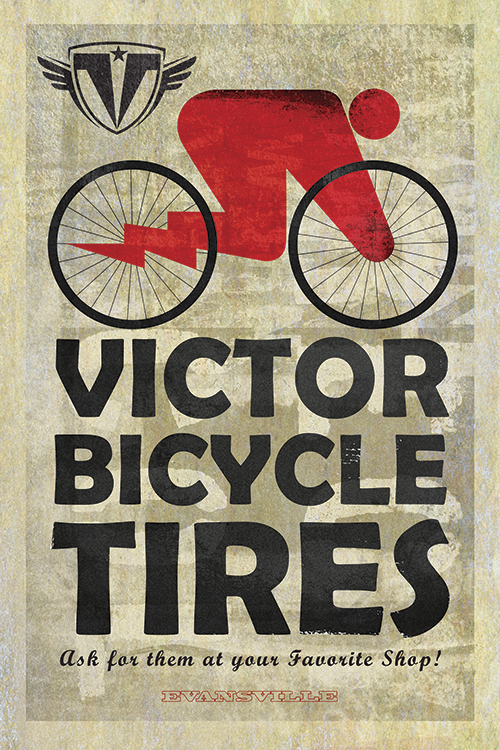 There is only one way to deal with ice - either put good studded tires (like Nokian WXC 300, for example), or studded them yourself. For snow, there are more solutions. It all depends on his condition. For loose and little-trodden snow, a tread with rare and high elements, like the Panaracer Fire Mud, is suitable. A tread equipped with small frequent elements, for example, the Panaracer Fire XC, will cope with rocked and trampled snow. Snow with frost can be equated to ice. In general, in any case, for winter it is better to buy wider tires at least for the rear wheel. For winter trips, slicks or semi-slicks are unacceptable. You can take them, but then be prepared to amuse those around you with your “feints”, and also crash into someone or something. nine0005
There is only one way to deal with ice - either put good studded tires (like Nokian WXC 300, for example), or studded them yourself. For snow, there are more solutions. It all depends on his condition. For loose and little-trodden snow, a tread with rare and high elements, like the Panaracer Fire Mud, is suitable. A tread equipped with small frequent elements, for example, the Panaracer Fire XC, will cope with rocked and trampled snow. Snow with frost can be equated to ice. In general, in any case, for winter it is better to buy wider tires at least for the rear wheel. For winter trips, slicks or semi-slicks are unacceptable. You can take them, but then be prepared to amuse those around you with your “feints”, and also crash into someone or something. nine0005
Autumn and spring are the best time for for those who love skiing in difficult conditions - in the mud. I prefer the usual summer aggressive or all-purpose tires on the front wheel, and on the back I usually put something with rare lugs, like Nokian X-Trak or Michelin XL-S.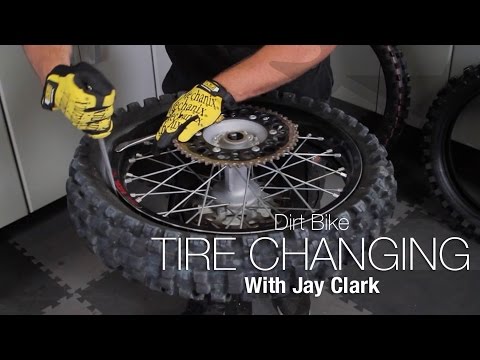
4x track in Volen. Without rubber with "teeth" it is better not to try!
Basically, in the summer all cycling takes place either on the asphalt track or on dirt roads. nine0004 It will make sense to put slicks or semi-slicks here. Of course, it is better to choose a tire based on the route. Riding through sands and swamps requires something aggressive, wide, with an infrequent tread. On a paved road, extra effort won't hurt, but on heavy sections it will give more benefit. My choice of tires depends on what is the most difficult section I have on the road. Although you can, for example, choose tires for the longest section of the route. Any of these decisions will be correct. nine0005 Budget semi-slick. It used to be an evil tire for DH. Various pribludy in the structure of tires. The most famous "chip" is a Kevlar tape, which is embedded under the tire tread. It is great protection from objects that can cut the tire. Text: kaer. Source: forum.xservice.ru Bicycle Tire Construction SINGLE PLY CASING (SPC) DUAL PLY CASING (DPC) Weave Bead FOLDABLE BEAD CARBON FIBER BEAD RADIAL TUBELESS ROAD BUTYL INSERT LUST ONE70 Maxxis tires. Puncture protection KEVLAR® COMPOSITE (K2) NYLON BREAKER MAXXPROTECT KEVLAR® INSIDE SINGLE DUAL TRIPLE (3C) 3C DownHill SUPER TACKY  But it will absolutely not protect against piercing objects - nails, paper clips and other things. Another notable feature is the Kevlar bead cord. The main advantage of such a tire is that it is compactly folded into a roll, and you can take it with you. In addition, it is much lighter than a tire with a steel bead cord. I heard a strange opinion that Kevlar is unsuitable for winter, as it "rots". This is absolutely false. Kevlar is an inert material. nine0005
But it will absolutely not protect against piercing objects - nails, paper clips and other things. Another notable feature is the Kevlar bead cord. The main advantage of such a tire is that it is compactly folded into a roll, and you can take it with you. In addition, it is much lighter than a tire with a steel bead cord. I heard a strange opinion that Kevlar is unsuitable for winter, as it "rots". This is absolutely false. Kevlar is an inert material. nine0005 Bicycle tires. Design. Technologies
Bicycle Tire Shell (Casing)
One layer of nylon fiber coated with rubber that wraps around the cord. Single-layer weaving allows the tire to "lick" tracks with different terrain and reduces the weight of the tire.
Double layer nylon weave for added protection on downhill runs.
THREADS PER INCH (TPI)
The number of threads of nylon that make up the carcass of the tire per square inch. A lower TPI value (correspondingly greater thread thickness) increases the possibility of a puncture and increases the weight of the tire. A higher TPI allows the tire to better "lick" the bumps in the track and provides a more comfortable ride. In addition, high TPI tires are lighter. nine0005
WIRE BEAD
Strong material that holds the tire to the rim. Steel wire makes the tire heavier, but does not stretch with increasing air pressure in the tire.
Flexible like steel, the bead is also designed to hold the tire on the rim, but is lighter and makes the tire more transportable on the road. The flexible cord is either Kevlar or aramid fibers.
A flexible material with the ability to hold the tire on the rim at the high pressures found in road tires.
Maxxis tyres. Construction
TUBULAR
A traditional construction tire, better known as the "single tube". In this case, compressed air is inside the tire. A bicycle tire of this type is glued into a special tubular type rim.
The radial design of the tire consists in the orientation of the fibers perpendicular to the rolling direction of the tire. This production method results in a soft, flexible sidewall for a soft, comfortable ride. nine0005
Tubeless technology that combines ultra-strong carbon fiber with a butyl inner layer. The combination of these two technologies results in a road bike tire that does not require the use of a tube.
Additional layer of butyl rubber placed from cord to cord. Used in Downhill tires to prevent snakebite and protect the rim from hard impacts.
Acronym for Lightweight Ultimate Sidewall Technology. The nylon base of the tire is coated with an ultra-light material that forms an airtight layer, allowing for a lightweight tubeless tire. This technology has found application in MTB racing tires, e.g. Larsen TT UST, Monorail.
This technology has found application in MTB racing tires, e.g. Larsen TT UST, Monorail.
EXO PROTECTION
Extremely durable material housed in the sidewalls of the tire to prevent tire side cuts when used on rocky and mountainous trails. The finely woven material is very light and flexible, so its use does not impair the properties of the tire. The technology is implemented in tires CrossMark, Ignitor, Ikon
ONE70 technology uses a special weave in the tire carcass to reduce rolling resistance. The ONE70 provides excellent trail feel and significantly reduces tire weight. The technology has found application in tires MaxxLite 285 and MaxxLite 310
SILKWORM
SILKWORM technology uses a unique material developed by Maxxis to provide exceptional tire protection against punctures and cuts. Silkworm material can be placed from cord to cord. This tire is labeled Silkworm® B2B. If the anti-puncture material is placed only under the tread, the Silkworm® marking is applied to the tire. You can find this marking on tires Re-Fuse, Detonator, Hookworm
You can find this marking on tires Re-Fuse, Detonator, Hookworm
Exclusive Maxxis technology used in a limited number of bicycle tires. The technology consists in the use of a special fabric that provides more reliable protection against punctures than the common Kevlar® and Vectran®. The use of lightweight and flexible K2 material guarantees unrivaled performance characteristics. K2 is used in Maxxis road tires. Courchevel, Re-Fuse
Nylon puncture protection layer placed directly under the tire tread. Used in some road tires because Xenith Hors Category, Courchevel
Polyfiber material placed directly between the tread and the nylon base of the tyre. Available in various thicknesses from 0.9 to 1.5 mm, MAXXPROTECT polyfiber material is used for puncture protection in some hybrid semi-slicks. Overdrive MaxxPro
Kevlar layer is placed between the base of the tire and the tread.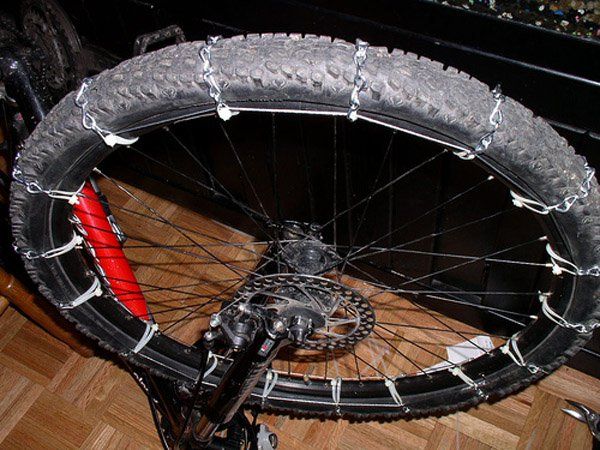 Similar to MAXXPROTECT, KEVLAR® INSIDE technology uses a variable thickness Kevlar layer to provide optimal puncture protection. Overdrive Kevlar Belt
Similar to MAXXPROTECT, KEVLAR® INSIDE technology uses a variable thickness Kevlar layer to provide optimal puncture protection. Overdrive Kevlar Belt
Maxxis tyres. Compound. Technologies
The most important component is the rubber compound (or compound) used to make the tire. Using two different compound formulas, Maxxis engineers get two tires that are completely different in performance and completely identical visually. The list below will help you understand the different compounds used in Maxxis
Tires Using a single compound throughout the base of the tire, optimized for maximum survivability and performance. nine0005
Double compound. Harder rubber is used in the middle for better rolling. And a softer compound is used for the side studs for optimal bike control.
Similar to DUAL, TRIPLE COMPOUND technology uses rubber with different characteristics to achieve the desired tire properties. Used in road and specialty downhill tires
Used in road and specialty downhill tires
3C ROAD
The tire is a combination of three different compounds: the most rigid in the center for maximum rolling and two softer ones for confident control of the bike in the turn. Used in Courchevel 9 road tire0005
3C MTB
Triple compound also used in SPC tires for MTB bikes. Similar to road MTB 3C tires, they feature a stiffer center and softer side studs for optimal bike control in all trail conditions. Ikon
3C DownHill
tyre. Used in Downhill tires Minion DH Front, Minion DH Rear, High Roller
EXCEPTION SERIES
Technology that combines high TPI and a special compound for low weight and exceptional rolling. The eXCeption series is available on a limited range of models. The technology is used in tires DTH, Miracle, Larsen TT, CrossMark, Ignitor, High Roller, Aspen, Ikon
Special compound, the main properties of which are low rebound and excellent grip.